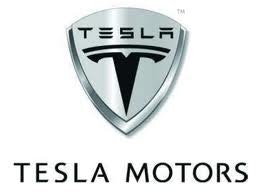Tesla Motors Inc (NASDAQ:TSLA) is on track this year to produce north of 20,000 units annually in North America. It has also been producing vehicles for export to Europe with volumes of nearly 200 per week. Tesla sees the cars that it’s exporting now as a great marketing tool. These few cars can increase demand based on their exclusivity factor and word-of-mouth references. With demand outstripping supply for the foreseeable future, Tesla Motors Inc (NASDAQ:TSLA) will see growing margins and growing production. But, is the stock too rich to make investors any money at this rate?
Production
Tesla’s highly efficient designs aren’t just being used in-house anymore. Toyota Motor Corporation (ADR) (NYSE:TM) is using power trains created by Tesla to power its recent electric RAV4. Deals like this help Tesla diversify its revenue streams and increase its volumes to gain bigger supplier discounts. Toyota recognizes that it can either spend thousands of man hours designing and creating its own power trains, or it can license out the leading technology. Toyota Motor Corporation (ADR) (NYSE:TM) can still utilize its sales network and gain volume discounts from suppliers; this sales network is one of Toyota’s strongest moats against up-and-comers like Tesla Motors Inc (NASDAQ:TSLA).
Toyota Motor Corporation (ADR) (NYSE:TM) and Tesla are in two separate markets as of right now, but as battery technology reduces costs, these two companies could be going head-to-head. Currently Toyota focuses on mass-market green vehicles, like the Prius. Toyota’s flagship green vehicle pales in comparison to Tesla on all measurable fronts, but Tesla Motors Inc (NASDAQ:TSLA)’s reliance on expensive batteries makes the car available only to the wealthy.
Toyota Motor Corporation (ADR) (NYSE:TM)’s global scale is a double-edged sword; the automaker has invested billions of dollars in plants and equipment. If Tesla’s vehicles come down in price over the next few years to compete against vehicles like the Prius, Toyota will see shrinking margins and market share.
Tesla aims to end the year near an annualized vehicle-production rate of 23,000 to 25,000, far below that of the Prius’ 320,000 units produced in 2012. Tesla is currently working on improving logistics costs and process improvements to increase production levels to 20,000 per shift in 2014. This means that if Tesla runs two shifts on a full-year basis, the car company could scale up to 40,000 units per year with its current plants, barring any supplier issues. Increasing production anywhere beyond the 40,000 mark would require an additional investment in factory space by Tesla Motors Inc (NASDAQ:TSLA).
Infrastructure
The feeling of being stranded on the highway with no electrical outlet to be found is referred to as range anxiety, and it remains an issue for electric cars. Automakers are trying to identify ways to relieve this in different ways. Tesla’s vehicles use long-range batteries that can go nearly 300 miles per full charge and a network of supercharging stations. On the other hand, vehicles like the Chevy Volt use a backup on-board gas generator to generate electricity when the battery runs low.
As Tesla sells more vehicles, there will be increased demand for these supercharging stations that can power a vehicle to half charge in 30 minutes, enough time to grab a bite to eat and stretch your legs.
Automakers are facing strict guidelines on fuel economy ranges that their fleets must attain. How are automakers like General Motors Company (NYSE:GM) supposed to comply with the increased fuel-economy laws? The easy answer is to purchase credits from other companies. Since Tesla Motors Inc (NASDAQ:TSLA) earns credits on each vehicle it sells, it can then turn around and sell the credits to manufacturers that will have a harder time bringing their truck fleets up to compliance. The downside of this equation is that it will put pressure on GM’s profit margin, as the company will have the added expense of purchasing these credits.
General Motors Company (NYSE:GM) has been able to increase the efficiency of its trucks with mild hybrid systems and cylinder deactivation. However, the bottom line is that a truck is a vehicle that is less aerodynamic and heavier than a sedan, and will most likely need to be offset with highly efficient lines like the volt. The other way to supplement its fleet’s fuel efficiency is by purchasing credits from other manufacturers. Then GM will be able to sell its bread-and-butter trucks even if its cars don’t totally bring up fuel efficiency. This provides yet another stream of revenue to Tesla.




